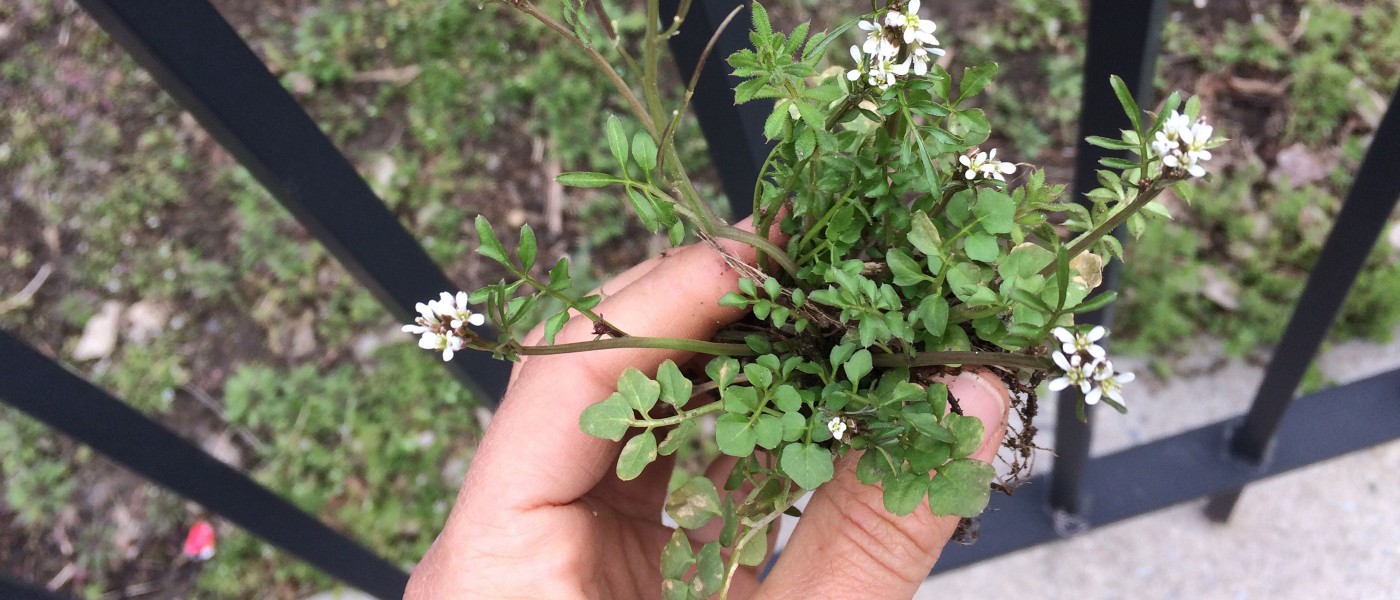Weed of the Month: Hairy Bittercress
As winter warms to spring, a favorite weed of foragers starts to emerge in rather cute clumps—it’s hairy bittercress! It has actually been lurking near the surface all winter, having germinated in the fall and waited out the cold temperatures before sending up flowers and seeds.
Hairy bittercress (Cardamine hirsuta) leafs out in a basal rosette, and like other members of the mustard family (Brassicaceae), its tender greens are edible. Don’t be fooled by the common name—its flavor is mild and peppery, not bitter. Though the flowers can be tough to chew, the tender leaves are suitable for a chic microgreens salad and have tons of vitamin C, calcium, magnesium, beta-carotene, and antioxidants.
The flower stalks shoot up above the rosette, topped with clusters of tiny, cross-shaped white flowers. Indeed, the former name for the family is Cruciferae, a reference to the crucifix pattern of the petals common in that family’s flowers. However, when I was little, I remember thinking these tiny flowers looked like frosty pixie wands or fairy crowns, at once earthy, tough, regal, and whimsical.
More: Learn to identify more weeds and find out more about each one by browsing the Weed of the Month archive.
While urban grazers will be most focused on the leaves, I think the seed capsules are the best part of hairy bittercress. Called siliques, they look like purplish-green toothpicks standing upright around the flower. As the seeds mature, the pods begin to coil tightly until—pop! A gentle touch or passing breeze triggers the pods to explode and send the seeds flying as far as three feet from the mother plant. This ballistic dispersal strategy, known as ballochory, is also employed by jewelweed and cranesbill.
Though hairy bittercress is originally from Eurasia and was introduced to North America, there are several species of Cardamine that are native to the United States. Several are listed as threatened or endangered, mostly due to habitat loss.
Hairy bittercress is adapted to moist, disturbed soils, so it emerges wherever we irrigate. Unsurprisingly, then, it’s a common lawn weed (where it can form expansive mats) as well as a greenhouse weed (where it pops up in and around containers). Mowing and hand weeding are the typical means of control—the shallow fibrous roots make it an easy pull. If you do pull some from your garden beds, consider making a farmer’s sandwich of cheese, apples, and a bit of fresh bittercress. Skip the compost pile and send it your stomach instead!


